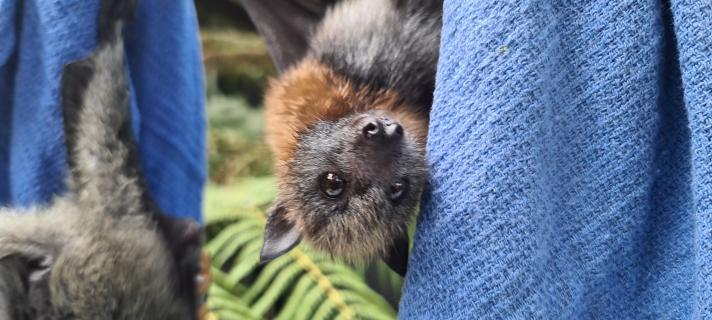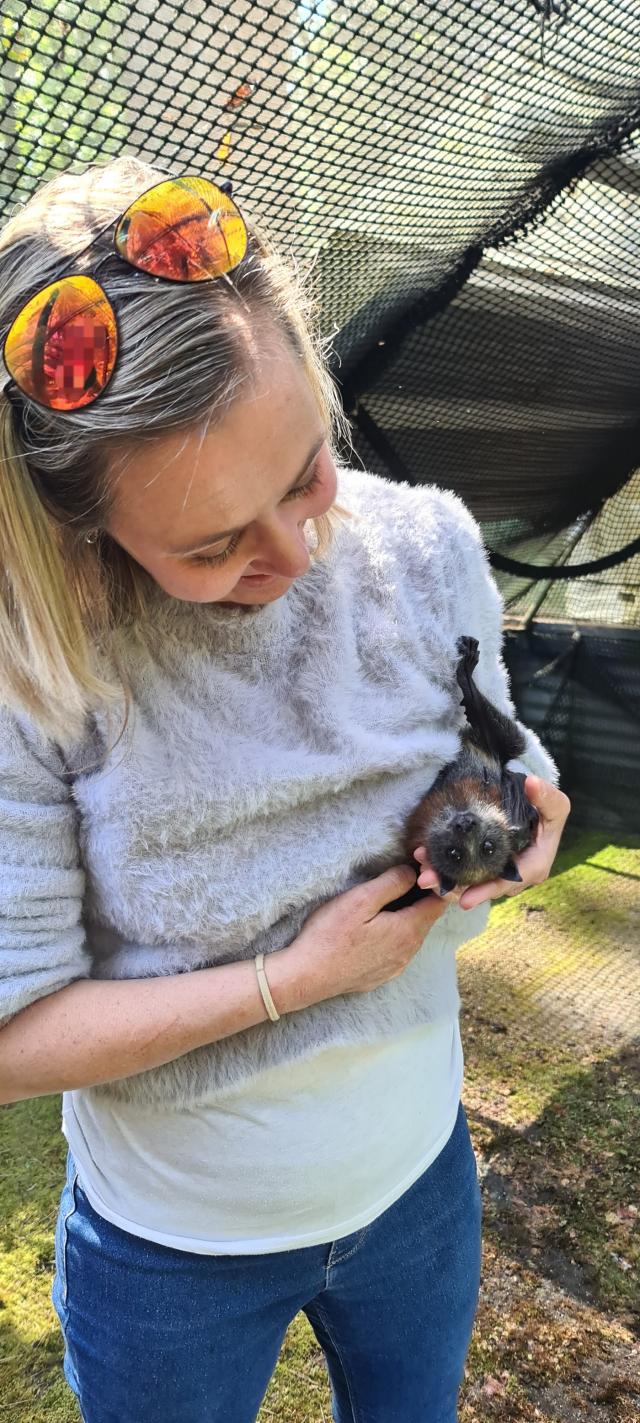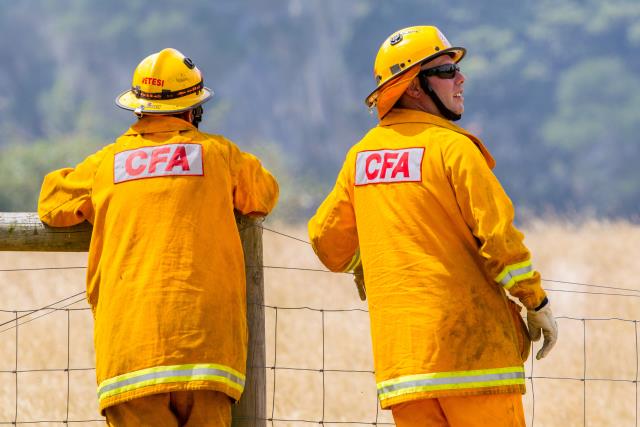A microbat shelter in Olinda has just set nearly 70 grey-headed flying foxes free at Yarra Bend, with the rescue’s operator looking to educate people on the native Australian species.
Fruit tree netting, barbed wire fences are human-driven causes of death for the flying fox, leaving them in the hands of shelter staff including those at Tamsyn Hogarth’s Fly By Night clinic.
In the busy months between October and March, the rescue could assist up to 300 injured flying foxes, with colonies found in Yarra Bend Park and Redwood Forest.
“It can be double that if it’s a really bad weather season for the eucalypt… if we have rain consecutively for weeks that washes the nectar out, and it can cause bats to go to substitute food, that is often human food, so they can go into people’s backyard and get caught in [netting],“ Ms Hogarth said.
“If we have massive hot days, we can get a lot of dead adults that create a lot of orphans.“
The flying fox has shown a decline from a population of 214,750 in November 2005 to 92,880 in November 2014, according to the Australian government’s Department of Climate Change, Energy, the Environment and Water.
Mostly found in Queensland in winter months, the species – which are Australia’s number one eucalypt pollinators – with a body 23 to 29 centimetres and long and dark grey fur, become more noticeable throughout urban parts of Melbourne as they follow flowering gum.
“They are listed as a threatened species internationally… we’ve lost 30 per cent of the population in the last 30 years, so it’s a huge decrease,” Ms Hogarth said.
“People say ‘how can they be a threatened species? We should have millions’.
“There should be millions pollinating those eucalypts, but we don’t have the eucalypts anymore, and those eucalypts feed the koala.
“If you want your really cute cuddly koalas, you need to protect those other keystone species that do the pollination.”
Ms Hogarth said a common misconception held by residents is that the flying fox is a pest, with people still shooting and bashing the animals and police often involved in rescues.
“They’re not scary animals. They’re actually quite affectionate, within a 48-hour period they’re totally trusting of you; that’s if you’re being nice and feeding them,“ she said.
“They’re not blind… they have better than 2020 vision… they’ll look right at you and they really take it in.“
Residents are required to use five millimetre by five millimetre netting on their trees according to Victorian regulations introduced in 2021.
“A lot of the nets now are are banned if they’ve got a large aperture, but we’re still seeing bats in netting that are under the net, and they can suffer as well as ones that are entangled,“ Ms Hogarth said.
“Things like amputations are necessary on digits, so Healesville Sanctuary or Melbourne Zoo or even Werribee Zoo will do those procedures because they’re a threatened species, and sometimes if they get hit by a car they need to be checked for X-rays.
“It can take three weeks for those wounds to come out, so that’s why I keep them inside for a period of time and then they go out to the flight aviary.“
Education is key for residents to help the flying fox population, Ms Hogarth said.
“Next would be ’do you really need to net your fruit tree?’“
“Be aware of wildlife friendly fencing; there are other options.
“Most of the people that do it don’t realise, they’re not doing it intentionally, they’re just unaware.“
She advised residents to call a wildlife rescue group if they find a flying fox in need of assistance.
“Always call for help; don’t try and rescue a flying fox or microbat, because that’s where you might get bitten and things can really escalate from there in terms of fear or worry.“
“They’re wild, they’re petrified, so you want to step back a bit.“
If you are in need of a rescue for a flying fox, you can contact the Fly By Night shelter on 0409 530 541.








